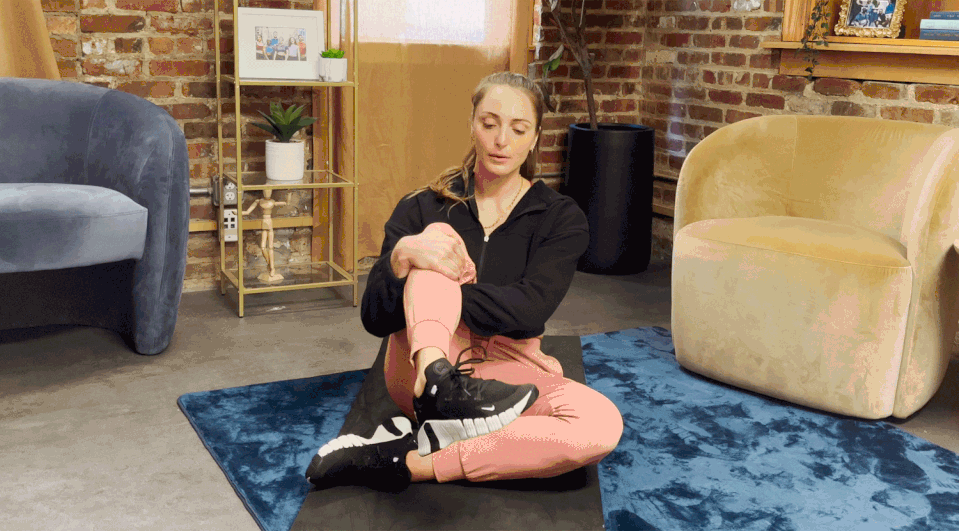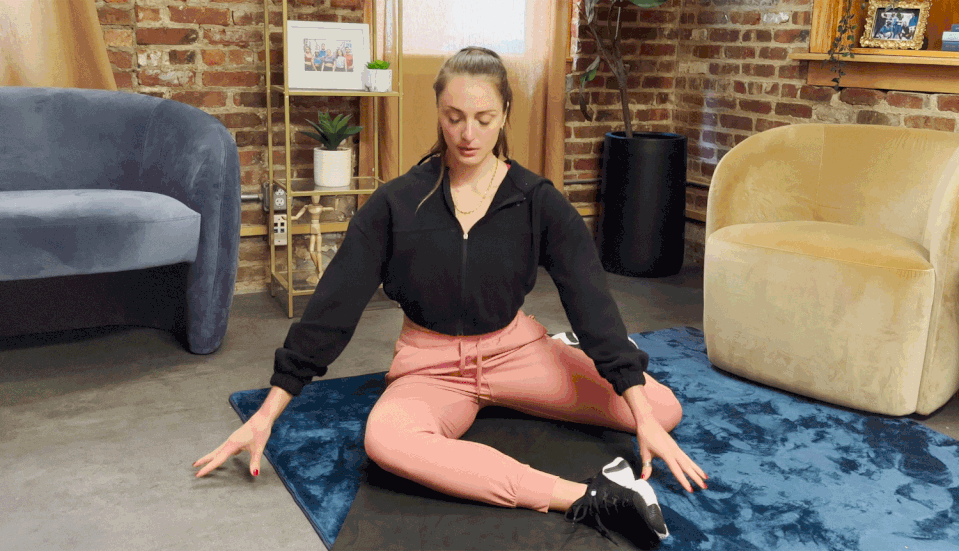This 1 mobility exercise can reduce hip and back pain
Welcome to Start TODAY. Sign up for our Start TODAY newsletter to receive daily inspiration sent to your inbox — and join us on Instagram!
Mobility has become a trendy buzzword, yet many of us fail to make it a priority in our fitness routine.
And this is a big mistake, experts say. Mobility training is an essential piece of any well-rounded exercise routine. But what is it exactly? And what are some simple exercises we should all be doing to improve our mobility?
We tapped Kristina Centenari, Tonal trainer and running coach certified in functional range conditioning, for the low down.
What is mobility training?
“Mobility is essentially how well your joints function in terms of both range of motion and strength. Someone who has strong mobility will be strong within different ranges of motion,” Centenari tells TODAY.com.
It may not be your first priority when hitting the gym, but making time for mobility work is essential. “Mobility is just as important as your concrete strength moves like your deadlift and your squat,” says Centenari. “If you cannot control your own bodyweight and if your joints don’t function on a foundational level, lifting external weight will begin to break your body down.”
And yes, walking counts as a weight-bearing exercise.
“Walking entails a lot from the body: foot plantar flexion, to ankle dorsiflexion, to hip flexion and extension, to rotation in the pelvis and stability in the core … just to name a few” says Centenari. “Doing mobility exercises before a walk is important to prime the body for all of these functions.”
The 1 mobility exercise everyone should do before a walk

“This exercise is called an ankle CAR. CAR is an acronym for controlled articular rotations,” says Centenari. “When performing an ankle CAR, or any joint CAR for that matter, you are taking the joint through it’s full range of motion, exploring how well you can control these outer ranges of motion. This will begin to uncover where you may be limited or where progress can be made, both neurologically and kinesthetically.”
To perform the ankle CAR: Start seated on the floor. Raise your right leg off the ground and pull the knee in toward your chest. Wrap both hands around the knee to hold your leg up. Then, draw a circle with your foot by pointing your toe and slowly rotating your ankle to to the left, down, right and up. Perform for 30 seconds in one direction and then switch directions for another 30 seconds. Switch sides and perform on the left leg.
1 mobility exercise for low back pain: The 90-90 exercise

If you sit all day — or have an active fitness routine — you likely suffer from tight hips, and in turn, low back pain. Mobility exercises are a great way to open up the hips and release some of the pressure in your lower back. One of Centenari’s go-to hip openers is the 90-90 stretch. "This one move can really help mitigate any low back pain you’re dealing with," she says.
“90/90 is a floor-based position that focuses on hip internal and external rotation,” says Centenari. “Not only does this help increase range of motion and functionality in the hips, but it will also help to address a lot of low back issues as this oftentimes stems from hip dysfunction.”
To perform the 90-90 stretch: Start seated on the floor. Bend your right leg in front of you so that your shin is parallel to your body and your knee is bent at 90 degrees. Bend your left leg behind you so that the shin is perpendicular to your body and your knee is bent at a 90-degree angle. Sit up tall, take a deep breath and then slowly fold forward over your front leg. Hold for a second before slowly sitting back upright. Continue to move in and out of the stretch for 90 seconds and then switch sides.
Other mobility exercises for walkers
If you’re looking for some other simple exercises to improve your mobility, Centenari recommends cat cow and thread the needle.
“These movements are great exercises to add to the repertoire — they’re simple to execute while decompressing the spine and improving range of motion from a rotational capacity,” says Centenari.
To perform cat cow: Start in a tabletop position with your hands below your shoulders and your knees below your hips. Move into the cat pose by dropping your stomach toward the ground, looking toward the sky and arching your back so that you form a gentle “U” shape with your spine. As you exhale, move into cow pose by pulling in your abs, dropping your head toward the ground and rounding your back. Continue alternating with each breath.
To perform thread the needle: Start in a tabletop position with your hands below your shoulders and your knees below your hips. Lift your right hand up off the ground and thread it beneath your left arm. Sit your glutes back onto your heels and gently rest your head on the ground looking toward your right hand. Hold for a few breaths and then switch sides.
This article was originally published on TODAY.com

